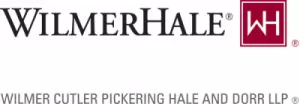- within Litigation and Mediation & Arbitration topic(s)
Key Takeaway
On June 16, 2025, the Senate Finance Committee released its draft
legislative text (the Senate Proposal) following the prior passage
of the One Big Beautiful Bill Act by the House of Representatives
(the House Bill). As compared with the House Bill, the Senate
Proposal would significantly expand the tax benefits currently
available under Section 1202 for "qualified small business
stock" (QSBS).1 These changes, if ultimately
enacted, would provide meaningful further incentives to promote the
growth of qualifying small businesses and investment within the
start-up ecosystem.
Summary of Current Law
Under current US federal income tax law, Section 1202 allows a noncorporate taxpayer to potentially exclude up to 100% of the amount of eligible gain realized from the sale or exchange of QSBS. The amount of gain that is eligible for exclusion by a taxpayer with respect to QSBS held in a particular corporation is subject to an annual limitation equal to the greater of either (i) $10 million (reduced by the aggregate amount of eligible gain taken into account by the taxpayer in prior taxable years with respect to dispositions of QSBS of such corporation) or (ii) 10 times the aggregate adjusted basis of QSBS issued by such corporation and disposed of by the taxpayer during the taxable year.
In order to potentially qualify for the benefits of Section 1202, a noncorporate taxpayer must acquire and hold stock in a qualifying C corporation. The potential benefits of Section 1202 do not directly apply to equity interests acquired and held in pass-through entities, such as S corporations or partnerships (or LLCs taxed as partnerships). However, an individual taxpayer's allocable share of gain attributable to a sale of QSBS by a pass-through entity may potentially qualify as gain eligible for the Section 1202 exclusion.
Furthermore, assuming a noncorporate taxpayer holds stock in a C corporation (either directly or indirectly through a pass-through entity), there are four main requirements that must be satisfied before gain on the sale of stock is potentially eligible for the exclusion under Section 1202: (i) the stock must be acquired directly from the relevant corporation at the time of its "original issuance"; (ii) the issuing corporation must be a "qualified small business" (this is often referred to as the "$50 million aggregate adjusted tax basis of assets" test); (iii) the issuing corporation must satisfy the "active business requirement" during substantially all of the taxpayer's holding period; and (iv) the taxpayer must hold the stock for more than five years.2
Potential Changes Contained in the Senate Proposal
The Senate Proposal contains three significant changes that have the potential to dramatically expand the nature and scope of the tax benefits that are afforded to holders of QSBS under current law:
- Tiered-Gain Exclusion. First, the Senate Proposal would establish a "tiered-gain exclusion" for QSBS that is acquired after the date on which any actual legislation may ultimately be enacted (the Effective Date). Specifically, the change would provide for a 50% exclusion after three years, a 75% exclusion after four years and a 100% exclusion after five years. In addition, assuming that the amount of any taxable tiered gain would be subject to tax at the maximum capital gains rate of 28% that generally applies to the taxable portion of gains realized with respect to QSBS acquired on or before September 27, 2010 (and that such gains would also be excluded as a preference item for purposes of the alternative minimum tax (AMT)), the effective tax rate would be 14% for stock in the three-year tier and 7% for stock in the four-year tier (with stock in the five-year tier retaining a 100% exclusion and exemption from the AMT).
- $15 Million Per-Issuer Cap. Second, the Senate Proposal would increase the amount of the current "per-issuer cap" potentially applicable to QSBS eligible gains from $10 million to $15 million for QSBS that is acquired after the Effective Date, indexed to inflation beginning in 2027. This represents a highly material change as compared with current law, which has not experienced an increase in the per-issuer cap since Section 1202 was originally enacted in 1993, with the potential to greatly benefit taxpayers (such as founders and early-stage employees) that have a relatively low tax basis in their shares of QSBS.
- $75 Million Aggregate Gross Assets Limitation. Third, the Senate Proposal would increase the current aggregate gross asset limitation from $50 million to $75 million for QSBS that is acquired after the Effective Date, indexed to inflation beginning in 2027. This also represents an important change as compared with current law as it will create a substantially higher threshold for new stock issuances. In addition, this proposed change, when coupled with the proposed changes to Section 174 that would allow taxpayers to immediately deduct domestic research or experimental expenditures, would greatly expand the potential number of qualifying small businesses that may benefit from Section 1202.
Potential Impact of Changes
At this point, it remains unclear whether the changes to Section 1202 contained in the Senate Proposal will ultimately be enacted or, if enacted, whether the changes will be materially altered from their current form. Constituents of the small business community and the start-up ecosystem should continue to monitor developments in relation to these potential changes and consider what impacts, if any, such changes may have on potential future stock issuances.
Footnotes
1. All "Section" references are to the U.S. Internal Revenue Code of 1986, as amended, or applicable Treasury Regulations promulgated thereunder.
2. For further details and background information regarding Section 1202/QSBS, see the full-length article "Section 1202: Qualified Small Business Stock" (April 15, 2025) and a related blog on WilmerHale Launch, "Section 1202 'Qualified Small Business Stock': Top 10 Planning Opportunities (and Traps for the Unwary)" (April 15, 2025).
The content of this article is intended to provide a general guide to the subject matter. Specialist advice should be sought about your specific circumstances.


